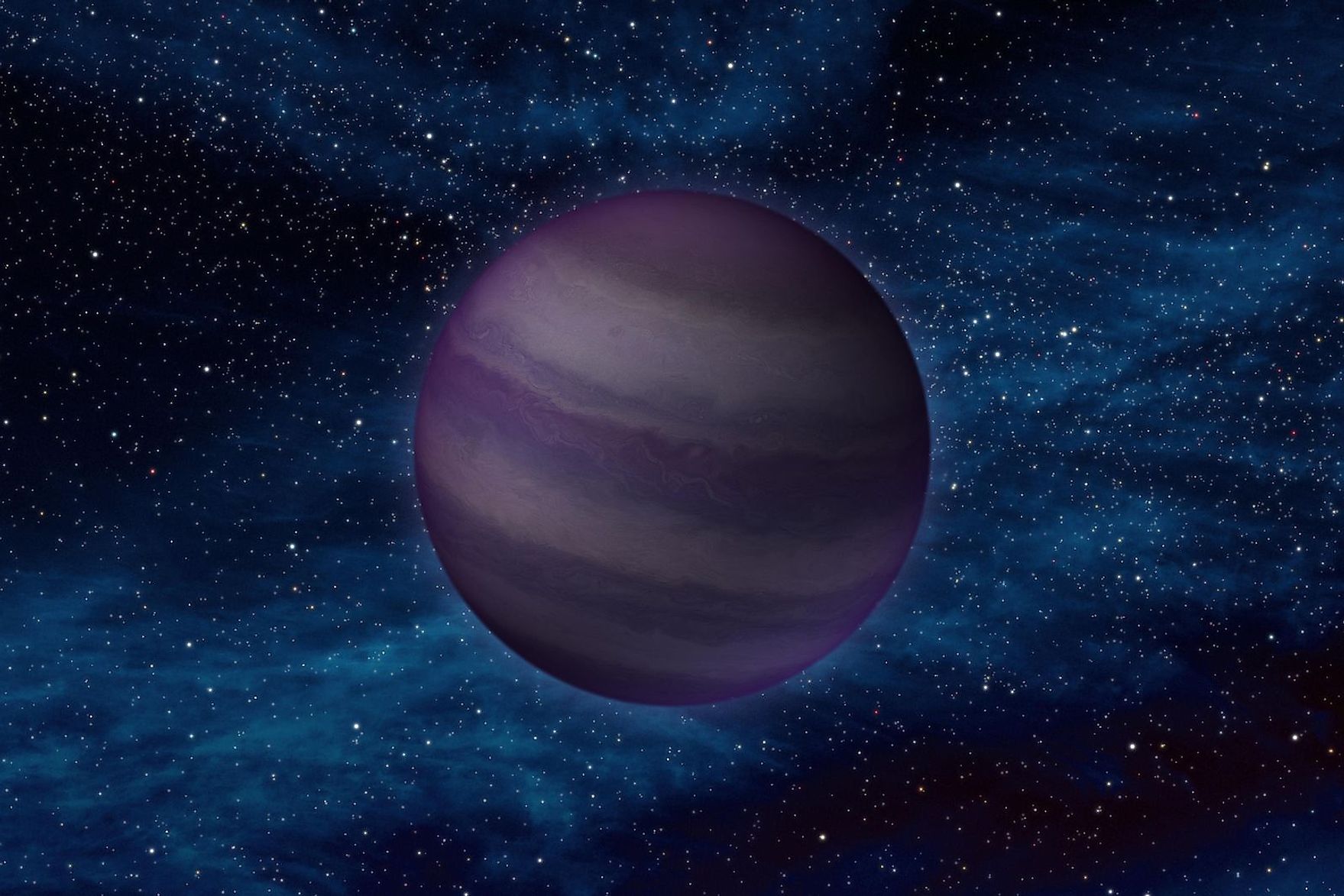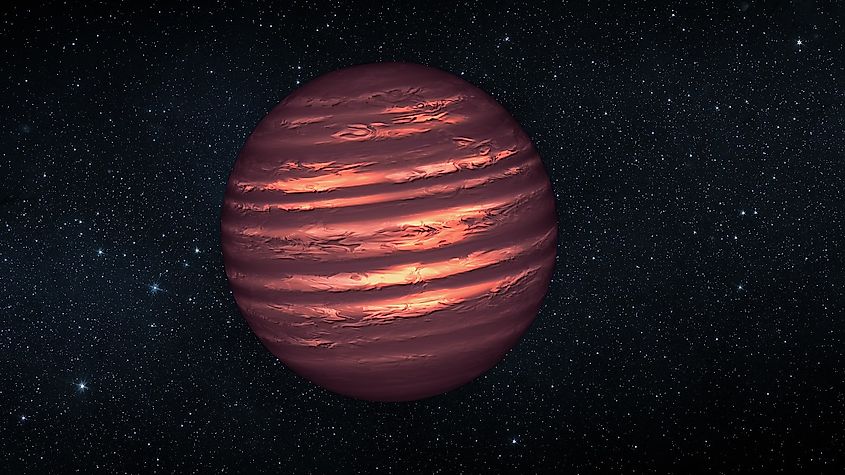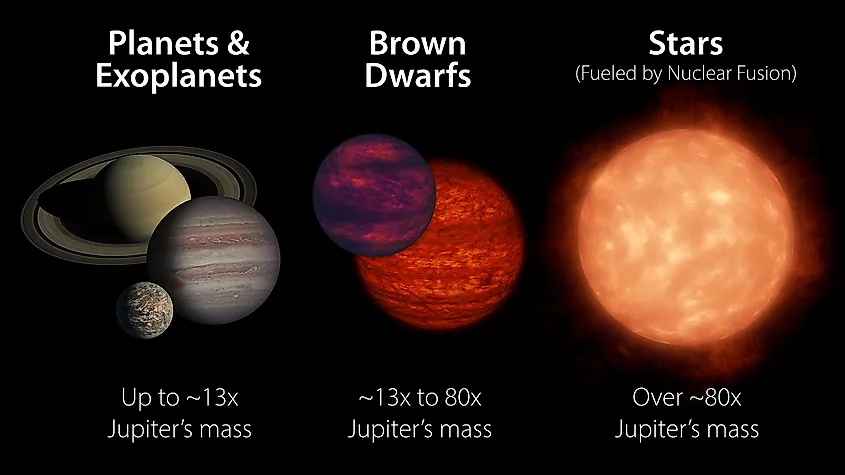
What Are Brown Dwarfs?
What happens when a star begins to form, but fails to become a true star? Stars are born within vast clouds of hydrogen gas clouds called nebulae. As hydrogen gas clumps together, it forms a protostar. If enough hydrogen is present, the protostar will become a main sequence star, powered by the fusion of hydrogen nuclei within its core. However, what happens if there isn’t enough hydrogen present, and a main sequence star never forms? If there isn’t enough hydrogen to form a star, a brown dwarf will form instead. What is a brown dwarf?
Planet Or Star?

Brown dwarfs are basically failed stars. They are objects that had the potential to become a star, yet never became massive enough for nuclear fusion to occur within their core. If the mass of a protostar is less than 0.08 solar masses, a brown dwarf will form instead of a star. Due to their small mass and low heat content, brown dwarfs give off very little light. The light that they do give off generally comes in the form of infrared radiation. Their dimness makes them difficult to detect and differentiate between a gas giant planet. In fact, brown dwarfs are very similar to planets like Jupiter, having a near identical composition and size. Interestingly, a gas giant can theoretically become a brown dwarf if it becomes massive enough. Brown dwarfs typically have a mass range of 13 to 80 Jupiters. If Jupiter were to increase its mass by 13 times, it would become a low mass brown dwarf. Thus, brown dwarfs can be thought of as being a state in between the largest planets and the smallest stars.
Characteristics Of Brown Dwarfs

Brown dwarfs emit very little light and are thus very hard to detect. Their existence was first predicted in the 1960s, yet the first brown dwarf was not discovered until the 1990s. At the time of their prediction, technology was simply not advanced enough to detect brown dwarfs. As time went on, scientists invented more advanced telescopes that were able to see more effectively in infrared light. With infrared telescopes, scientists were able to detect brown dwarfs in our galaxy. Since the discovery of the first brown dwarf in the 1990s, scientists have now uncovered thousands of them, the nearest of which to the sun is only 6.5 light years away from the sun.
Like stars and planets, brown dwarfs can develop an atmosphere. Since their composition is similar to gas giants, their atmospheres possess similar features. The atmosphere of a brown dwarf can be thought of as a more extreme form of Jupiter’s atmosphere. Brown dwarfs experience cloud formation, strong winds, and gigantic storms, similar to those that occur on the gas giants in our solar system. One unique feature of brown dwarf atmospheres, however, is the existence of iron rain. The iron within planets will generally sink towards the planet’s core during formation. When a brown dwarf forms, it contains a much higher heat content, and iron will generally remain at higher elevations. Over time, brown dwarfs become colder, and the iron within their atmospheres will condense into solid form and fall through the planet as rain.
Some brown dwarfs have been discovered orbiting stars, similar to planets. During the formation of a binary star system, the more massive star may steal material away from the other star, causing it to become a brown dwarf rather than a star. If this occurs, the brown dwarf will orbit the other star. Planets may also form around a brown dwarf, yet any planets around a brown dwarf will likely be far different than anything in our solar system. Brown dwarfs are cold, and will provide little to no heat to any planets. Brown dwarfs will also lack any noticeable habitable zone, meaning it is unlikely that any habitable planets will form around a brown dwarf.











